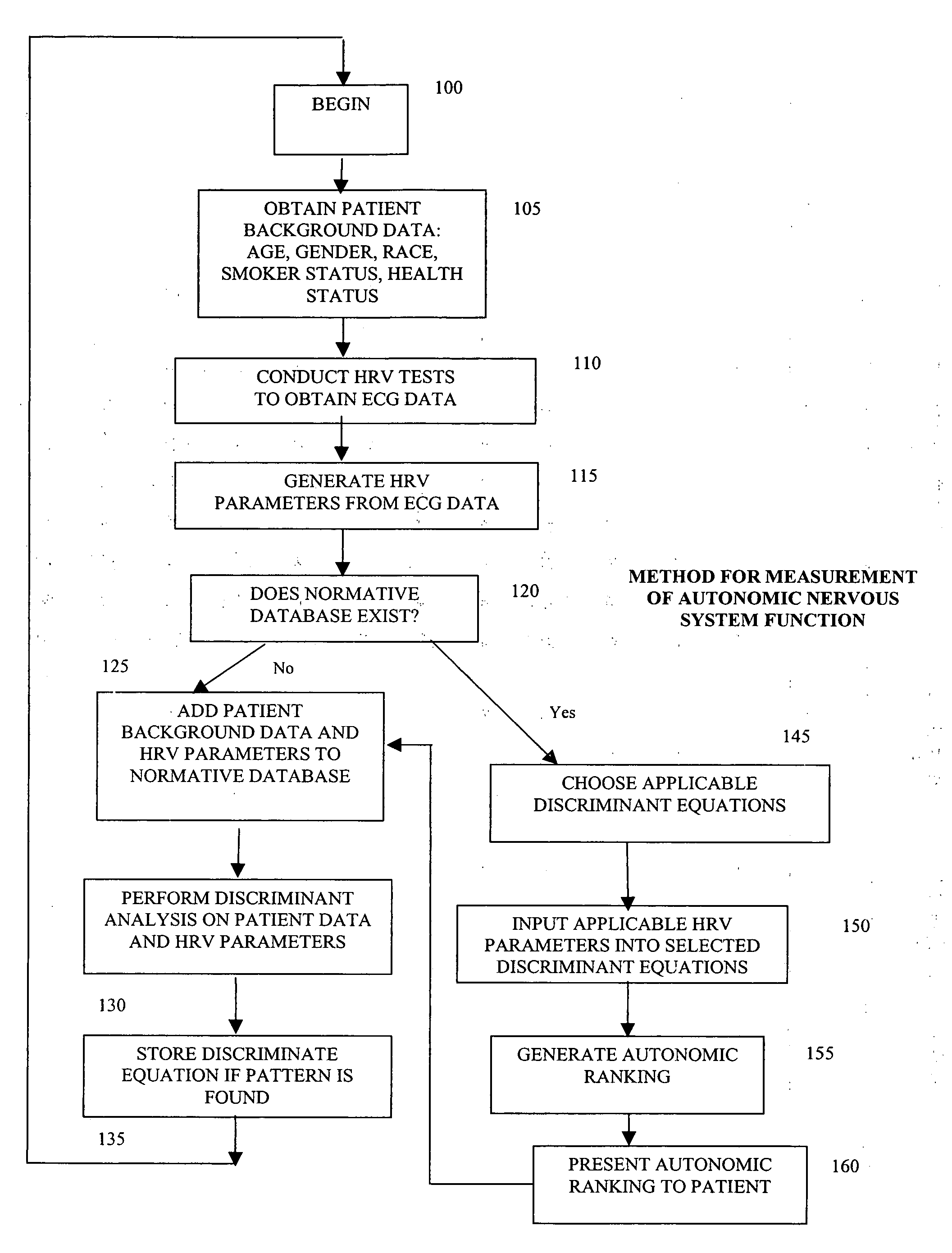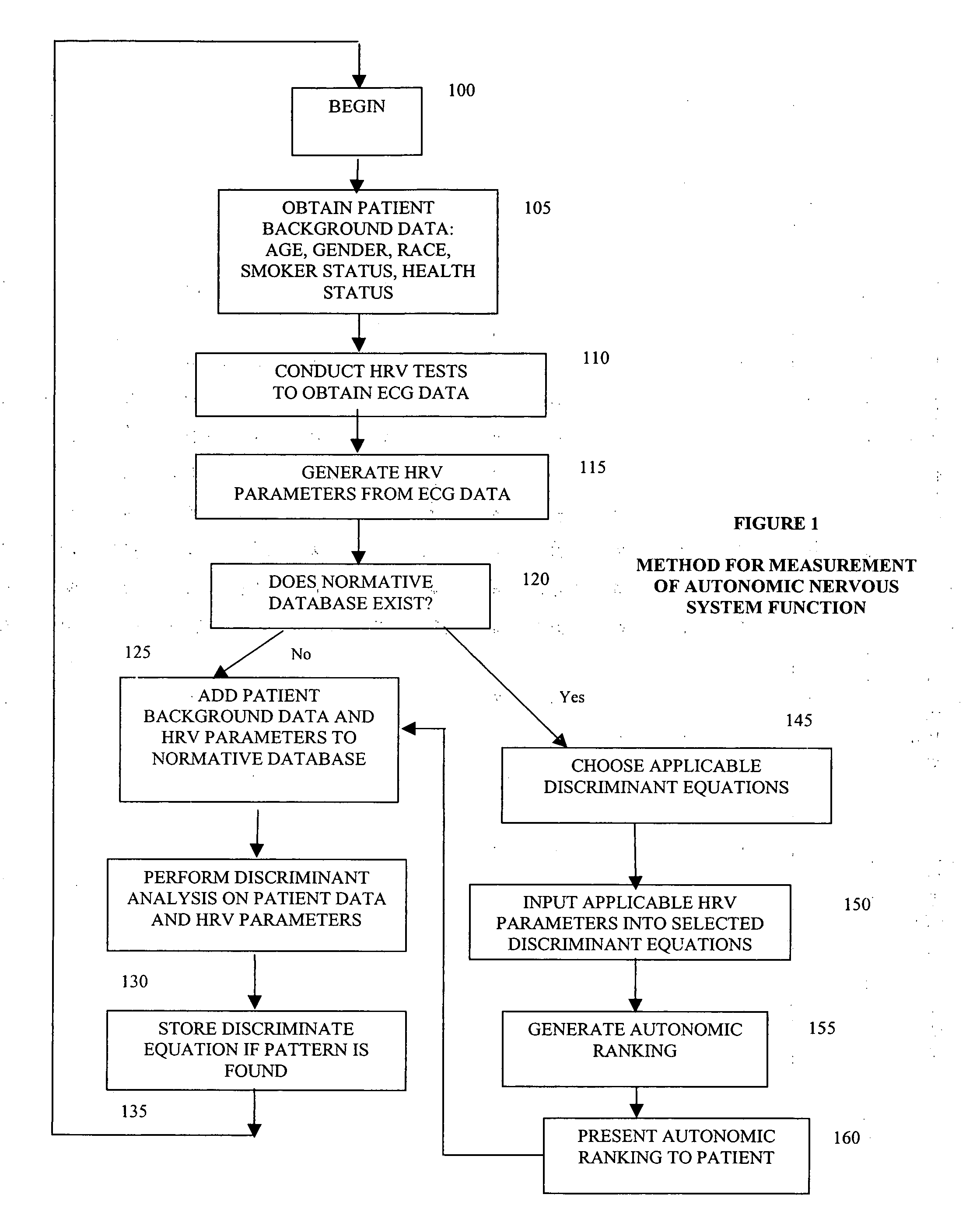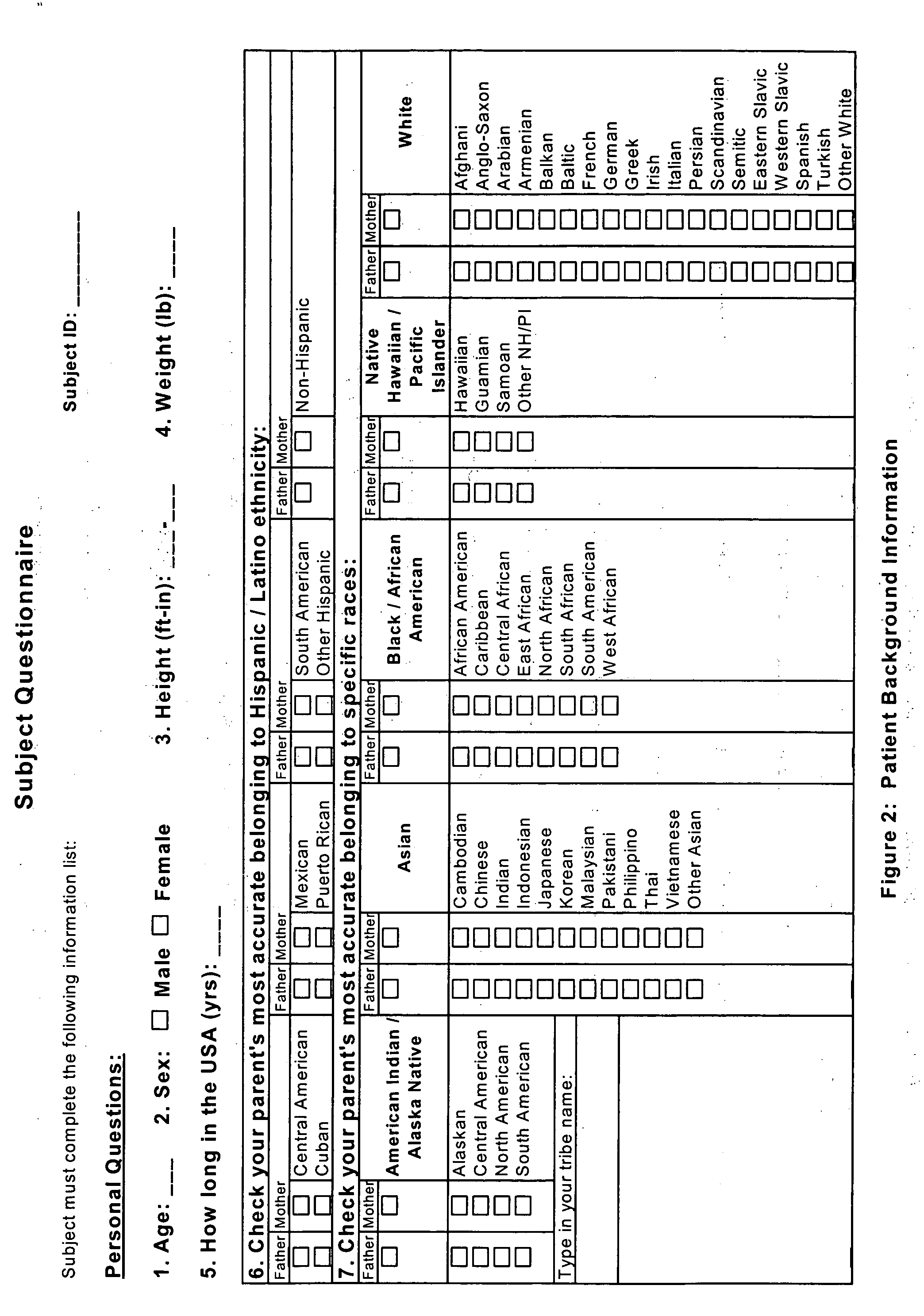Method and apparatus for assessing autonomic function
a technology of autonomic nervous system and measuring apparatus, which is applied in the direction of instruments, catheters, applications, etc., can solve the problems of poor patient care, poor patient care, and poor patient care, so as to improve the assessment of potential health problems for patients, assess progress or deterioration, and gain early notice
- Summary
- Abstract
- Description
- Claims
- Application Information
AI Technical Summary
Benefits of technology
Problems solved by technology
Method used
Image
Examples
Embodiment Construction
[0041] 1. Acquire Background Data from Patient
[0042]FIG. 1 illustrates a method for measurement of autonomic nervous system function. The method begins in step 100. In step 105, background data is obtained from a patient. Such data may include, for example, age, height, weight, gender, race, smoker status and health status. FIG. 2 illustrates exemplar questions regarding the patient's background information. FIG. 3 illustrates exemplar questions regarding the patient's health history. FIGS. 2 and 3 are merely exemplar questionnaires and those of ordinary skill in the art will appreciate that more or less detailed questions or other questions can be asked. For example, the patient may be asked whether he has cancer, and if so, specifically what type of cancer. If any “medical conditions” are indicated, such as cancer, then the patient may be deemed, in a general sense, “unhealthy.” If no “medical condition” is noted, the patient may be generally deemed “healthy.” In addition, the cl...
PUM
 Login to View More
Login to View More Abstract
Description
Claims
Application Information
 Login to View More
Login to View More - R&D
- Intellectual Property
- Life Sciences
- Materials
- Tech Scout
- Unparalleled Data Quality
- Higher Quality Content
- 60% Fewer Hallucinations
Browse by: Latest US Patents, China's latest patents, Technical Efficacy Thesaurus, Application Domain, Technology Topic, Popular Technical Reports.
© 2025 PatSnap. All rights reserved.Legal|Privacy policy|Modern Slavery Act Transparency Statement|Sitemap|About US| Contact US: help@patsnap.com



